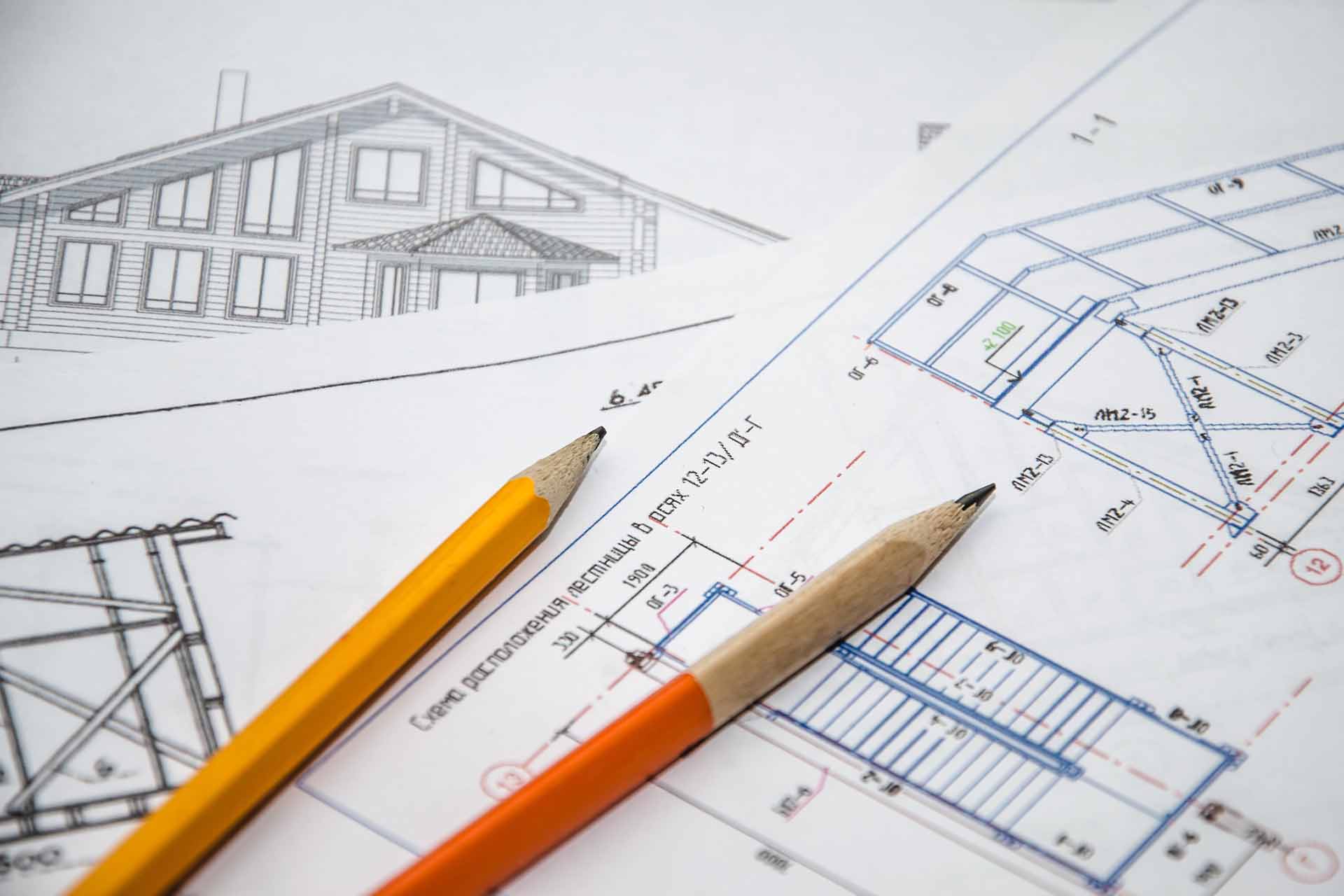Architect Collaboration Tips for Working with Engineers and Builders
Architect Collaboration Tips for Working with Engineers and Builders
Blog Article
Recognizing the Diverse Profession Paths Available for Aspiring Architect
As an aspiring Architect, you have a world of profession courses waiting for you. Whether you're attracted to traditional architecture or the nuances of sustainable style, there's a specific niche that straightens with your passions.
Traditional Design: Designing Structures and Frameworks
Standard style concentrates on designing buildings and structures that blend functionality with aesthetic charm. Your styles can reflect social heritage, showcasing neighborhood practices while meeting contemporary demands.
You'll establish abilities in preparing, model-making, and site evaluation, permitting you to envision and interact your ideas successfully. Engaging with clients, you'll require to recognize their vision and equate it right into possible styles.
Moreover, developing codes and sustainability practices are important in your work, guaranteeing your structures are environmentally pleasant and risk-free. As you grow in your job, you'll locate chances in domestic, commercial, or even restoration tasks, each offering distinct challenges. Accepting typical design leads the method for a fulfilling occupation that admires the past while forming the future.
Urban Planning: Forming Communities and Public Spaces
As an ambitious Architect, you can play an important role as a city planner, transforming just how neighborhoods operate and interact. By utilizing area engagement methods, you'll ensure that residents have a voice fit their setting. And also, incorporating sustainable style concepts will aid create areas that not just meet today's requirements but likewise protect the future.
Duty of Urban Planners
While lots of could believe of architects as the single visionaries behind buildings, urban planners play an important role in shaping the more comprehensive landscape of areas and public areas. By collaborating with various stakeholders, you'll aid create parks, transportation systems, and domestic locations that advertise social interaction and ease of access. Your expertise in spatial layout and neighborhood dynamics permits you to imagine future growth while maintaining social heritage.
Community Involvement Methods
Effective area engagement approaches are essential for metropolitan planners to assure that the voices of citizens are heard and valued in the preparation procedure. To foster purposeful dialogue, you must prioritize open online forums and workshops where community participants can express their concepts and concerns. Use surveys and social media sites to reach a broader target market, making sure varied point of views are consisted of. Collaborating with neighborhood organizations can improve trust fund and facilitate deeper links. It is necessary to supply clear information regarding suggested jobs and decision-making procedures, allowing homeowners to feel educated and equipped. By proactively listening and integrating feedback, you'll create areas that mirror the community's needs, inevitably resulting in even more successful and lasting metropolitan atmospheres. Welcome openness and continual dialogue for long-term influence.
Lasting Style Concepts
When making city rooms, including lasting layout concepts is important for producing atmospheres that prosper both environmentally and socially. You must start by focusing on energy performance, making use of materials that reduce waste and advertise recycling. Take into consideration incorporating eco-friendly areas, like gardens and parks, to boost biodiversity and enhance air high quality. Promoting walkability and public transportation can lessen reliance on cars and trucks, promoting a healthier community.
Creating with water preservation in mind is additionally vital-- think of rainfall gardens and absorptive surfaces to take care of stormwater. Involving area members throughout the planning procedure guarantees that the areas you develop meet their demands and encourage social communication. By embracing these principles, you'll add to dynamic, lasting urban landscapes that profit every person.

Landscape Architecture: Creating Lasting Outside Environments
As you discover landscape design, you'll discover crucial style principles that develop practical and beautiful exterior spaces. Sustainable methods play an essential duty in guaranteeing these atmospheres grow while decreasing environmental influence. Plus, you'll locate a variety of job chances that permit you to make a real distinction in how individuals interact with nature.
Style Concepts in Landscape
Comprehending style principles in landscape style is crucial for producing lasting outdoor environments that balance with nature. You'll require to consider elements like percentage, scale, and balance to ensure your layouts really feel cohesive and welcoming. Additionally, pay attention to seasonal adjustments, making with products that match the surroundings year-round.
Lasting Practices Overview
Sustainable practices in landscape style not just focus on looks yet additionally prioritize ecological health and wellness and resource conservation. You can create areas that advertise dirt wellness, such as exercising and using organic materials permaculture concepts. Ultimately, these techniques assure your layouts profit both individuals and the atmosphere for years to come.
Career Opportunities Expedition
With a solid structure in sustainable techniques, landscape check this design provides a selection of occupation paths that permit you to make a meaningful effect on the environment. Urban organizers commonly work together with landscape engineers to create green spaces in city setups, enhancing city livability. If you're enthusiastic about education and learning, consider coming to be a landscape architecture instructor, inspiring future generations.
Sustainable Layout: Focusing on Eco-Friendly Practices
As you discover your career in design, accepting green practices can establish you apart in an affordable field. Lasting style concentrates on creating structures that minimize environmental influence while enhancing passenger well-being. By integrating renewable products, energy-efficient systems, and lasting structure techniques, you'll add to a greener future.
Begin by acquiring expertise of green accreditations like LEED or BREEAM, which can strengthen your credentials. Think about exactly how all-natural light, air flow, and thermal efficiency can enhance layout. Collaborate with designers and environmental professionals to introduce solutions that decrease waste and save sources.
Do not neglect the importance of community involvement-- appealing regional stakeholders can influence styles that integrate with the setting. As customers significantly focus on sustainability, your know-how in eco-friendly practices will not only bring in tasks yet additionally meet your interest for liable architecture. Embrace this vital facet of the career, and enjoy your job grow.
Historical Conservation: Securing and Bring Back Cultural Heritage
While you begin on your building journey, take into consideration the important role of historical conservation in preserving our social heritage. This field focuses on the protection and repair of considerable buildings, sites, and frameworks that inform the stories of our past. By participating in historical conservation, you'll assist protect the architectural legacy that forms area identification.
As a historical preservation Architect, you'll analyze historical significance and examine the condition of structures. You'll work closely with conservationists and chroniclers to ensure authentic restoration strategies are employed. This profession course allows you to mix creativity with study, enabling you to make options that respect original products and craftsmanship.
Your work not just contributes to sustainability by recycling existing buildings however additionally fosters a feeling of pride within neighborhoods. Embracing this course will aid you become a guardian of background, preserving the tales and aesthetics that enhance our lives.
Inside Architecture: Enhancing Indoor Spaces
Historic preservation and interior design both share a dedication to boosting the constructed atmosphere, yet they focus on different elements. While historical conservation emphasizes maintaining a structure's historic and social value, indoor design absolutely nos in on enhancing interior areas for functionality and visual appeals.
As a hopeful Architect, you'll discover that indoor style allows you to mix creative thinking with technical skills. You'll design areas that not only look good but likewise promote comfort and effectiveness. This area includes comprehending exactly how light, shade, and products engage within a room, influencing state of mind and use.
You'll work with various tasks, from household homes to business workplaces, making certain that each environment meets the demands of its owners. By focusing on user experience, you can transform interiors right into motivating and useful spaces, making click here for more a considerable effect on how people connect with their environments. Accept the opportunity to improve interior settings and form the means people live and function.
Industrial Design: Merging Capability With Visual Appeals
Commercial design plays an important role in producing items that seamlessly blend visual appeals with capability, guaranteeing that what you make use of everyday is not only visually appealing yet likewise practical. As an ambitious Architect, you can engage yourself in this area, focusing on creating whatever from furnishings to consumer electronic devices. Your work involves comprehending user demands, materials, and making processes, permitting you to create cutting-edge services that boost daily experiences.
In commercial style, you'll frequently team up with makers, designers, and marketers, making sure that your designs are not only beautiful however additionally feasible. You'll learn to balance type and feature, focusing on usability without compromising style. By refining your skills in mapping out, 3D modeling, and prototyping, you'll be well-appointed to bring your concepts to life. This career path offers a dynamic setting where imagination satisfies practicality, making it a fulfilling choice for engineers thinking about forming the products of tomorrow.
Often Asked Questions
What Educational Qualifications Do I Required to End Up Being a Designer?
To become an engineer, you'll need a specialist degree in design, commonly a Bachelor's or Master's. Additionally, you'll have to finish an internship and pass the Architect Enrollment Examination to exercise lawfully.
Exist Accreditation Needs for Different Building Occupation Paths?
Yes, there're certification demands for various building paths. Architect. You'll require to pass exams, total teaching fellowships, and often pursue specialized training, depending upon your picked focus, like landscape style, urban style, or historical preservation
What Software Program Skills Are Necessary for Architects Today?

Exactly How Can I Gain Practical Experience While Studying Design?
You can gain more tips here sensible experience by interning at architectural companies, joining layout competitions, offering for community tasks, or collaborating with schoolmates on real-world assignments. These chances enhance your skills and construct important links in the industry.
What Task Opportunities Exist Outdoors Conventional Style Firms?
You can explore different work opportunities outside standard architecture firms, like city planning, interior layout, landscape design, construction monitoring, realty growth, or even roles in sustainability consulting. Each deals distinct obstacles and benefits.
Whether you're attracted to standard style or the subtleties of lasting style, there's a niche that straightens with your interests.When creating city spaces, including sustainable design principles is critical for creating environments that flourish both ecologically and socially.As you check out landscape design, you'll uncover important design principles that produce useful and beautiful outdoor spaces.Comprehending style concepts in landscape design is necessary for developing lasting exterior settings that balance with nature.In commercial style, you'll commonly work together with designers, marketers, and manufacturers, ensuring that your layouts are not just stunning but also viable.
Report this page